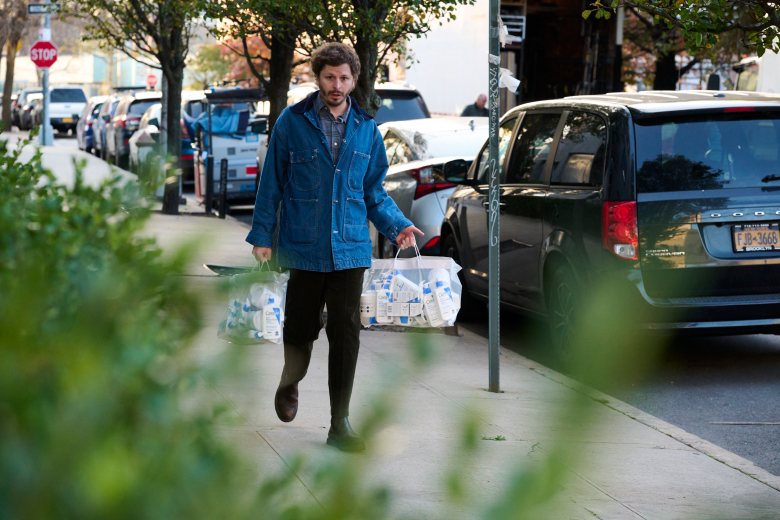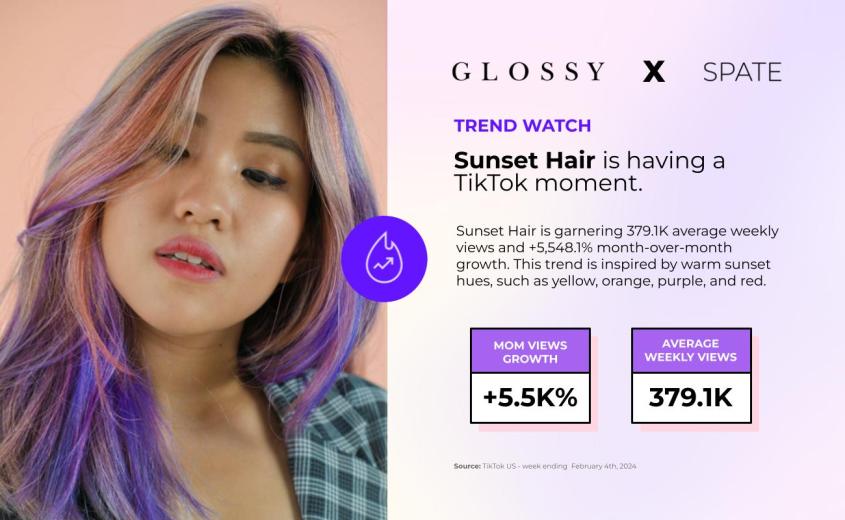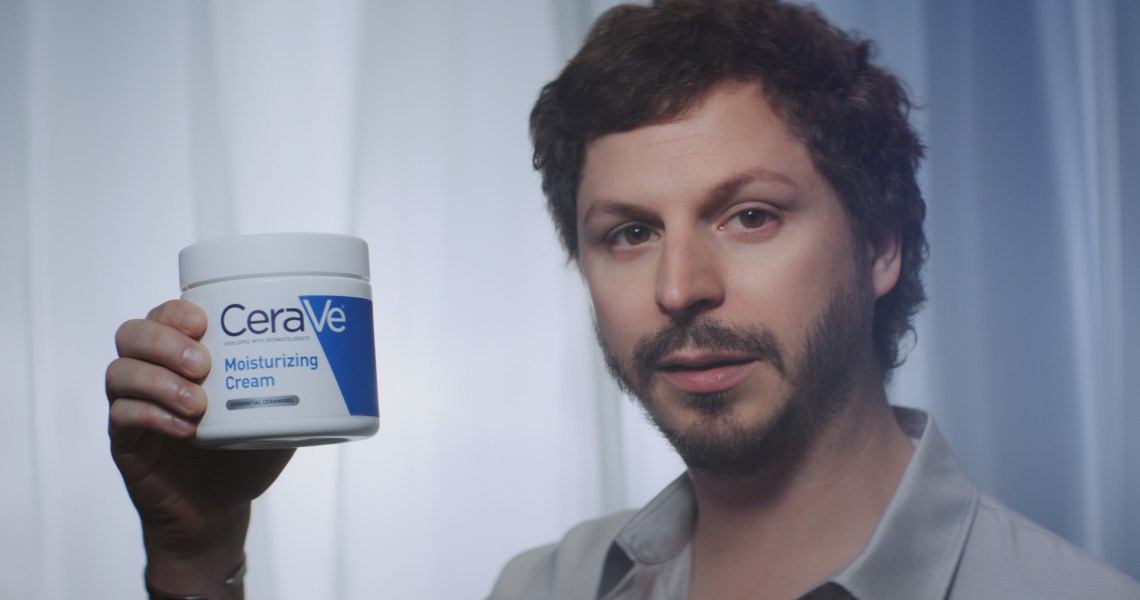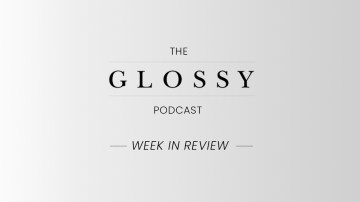To receive the Glossy Pop newsletter in your inbox every Friday, click here.
All products featured on Glossy Pop are independently selected by our editorial team. However, when you buy something through our retail links, we may earn an affiliate commission.
On January 22, the influencer Haley Kalil (@haleyybaylee, 8.4 million TikTok followers) posted a video. In it, she goes to a local Brooklyn pharmacy, only to discover the actor Michael Cera quietly signing bottles of one of CeraVe’s hero products: its Daily Moisturizing Lotion. “Hi. … That’s a lovely cream,” he says to Kalil, pointing to the shelf of CeraVe products before walking out of the store. In the aftermath, viewers flocked to the pharmacy, Euro Chemist, to try to catch Michael in the act or get their hands on a signed bottle, according to a CeraVe representative. Some called the pharmacy asking for employees to hold bottles for them, even offering upward of $200 for one. With 1 million views, that post kicked off a 360-degree marketing campaign that will culminate with a Super Bowl ad on Sunday night.
Working with Cera makes sense for the brand. A years-running in-joke in the skin-care community has long questioned whether Cera was, in fact, the founder of the ceramide-based skin-care brand. Speculation on Reddit dates back seven years. By January 26, paparazzi pics of Cera passing out CeraVe in Manhattan and carrying bags stuffed to the brim with its moisturizers were picked up by the likes of Page Six.

It’s a campaign that has played out in three carefully calibrated stages, which CeraVe architected with advertising agency WPP, led by Ogilvy PR North America. “Our [campaign] brief to the agency was not traditional; it wasn’t, ‘[Make] a 30-second spot.’ It was, ‘We need to create a 360 [degree] world,’ with the spot just included. That’s what’s made this special and come to life,” said Adam Kornblum, svp and global head of digital marketing at CeraVe.
Launched in 2005, CeraVe was acquired by L’Oréal in 2017. “Across the industry, new skin-care brands are popping up left and right. They offer dermatologist validations and tout their use of ceramides. … For them, it’s part of a growing skin-care trend. It’s part of their marketing materials. But for CeraVe, it’s who we are; it’s part of our brand DNA: Using three essential ceramides and being developed with dermatologists is not new for us,” Kornblum said. In turn, the larger goal of the campaign “was about reinforcing some key messages,” he said.
The brand’s “Chapter One” of the Michael CeraVe campaign was “the speculation.” This stage was meant to begin a frenzy of questioning about Cera’s connection to the brand. It also included CeraVe sending PR boxes “from Michael” to influencers and press, Kornblum said. He noted that such boxes “drive a lot of social conversation” across social platforms. In addition to signed “Michael CeraVe” products, the box included a T-shirt, a stuffed narwhal and a piece of paper with quotes from Cera, including, “Skin is just the beginning.” The brand paid over 50 influencers for the campaign, with some enlisted to create unboxing videos around the mailer. Notably, the campaign did not solely include female beauty creators, but also male creators like Lukas Battle (618,000 TikTok followers).
On January 25, Bobbi Althoff, known for her intentionally cringeworthy social media interviews, released an eight-minute sponsored interview with Cera. When asked if he “started CeraVe,” the actor responded, “I like to say I have some skin in the game, and I leave it at that.”
As an Ogilvy representative described, during the “Chapter Two” phase of the campaign, “the fight goes public.” That meant that CeraVe issued a statement across its social media platforms refuting Cera’s involvement with the brand but noting that it was “flattered to share Mr. Cera’s passion for moisturizer.” On January 31, Caleb Simpson (7.8 million followers), known for his apartment tours on TikTok, got a tour of Cera’s CeraVe lotion-ridden trailer. In a February 5 TikTok post, dermatologist, Dr. Muneeb Shah (@dermdoctor, 18.2 million followers) quizzed Cera about skin care, with Cera comedically deflecting each question. All of these posts, Althoff’s interview included, were sponsored and labeled as such.
“It wasn’t just looking to the skin-care community or even just derms. We needed to work with meme accounts and we needed to work with news breakers to help spread the word across different platforms and reach different different demographics. … Our goal is to reach a lot of people before the Super Bowl. So once the Super Bowl spot hits, it’s like, ‘Ah…’ — there’s that ‘aha’ moment,” Kornblum said.
CeraVe wasn’t afraid of stigma around the use of the #ad hashtag. “Our goal was to make ‘hashtag-ad’ cool. People were so eager to see what happened next, they didn’t even really care they were being advertised to, which I think is special,” Kornblum said, adding that “brands need to be brave like this.” As CeraVe always does, the company allowed its creator partners to maximize their own creativity and “take the story and run with it in their own style,” he said.
On Sunday night, the “prank” will unravel, Kornblum said, referring to CeraVe’s 30-second spot airing during the Super Bowl. This year, a 30-second spot will reportedly run a brand around $7 million. This, of course, does not include the fee for Cera and other talent involved in bringing the ad to life. Cera was immediately “captivated” with the concept and very involved in bringing it to life, Kornblum said. In fact, it was Cera who put forth directors and comedy duo Tim Heidecker and Eric Wareheim who directed the project. “I think he was drawn to the play on his name and the ideas of leaning into a joke and not breaking character,” Kornblum said. Cera was unavailable to speak for this story.
Cera, known for his roles in TV shows and films including “Arrested Development” and “Superbad,” had done one ad before, for Uber Eats in 2023. “While he isn’t on social media, he understood and loved the idea of telling a deeper, more immersive story before the TV spot aired during the Super Bowl … as long as it stayed weird, playful and a joke.”
In a 76-second version of the commercial posted to the URL iamcerave.com, Cera is seen scaling a mountain, getting a massage (from … himself) and communing with a narwhal, after announcing, “I’m Michael Cera, and this is my cream.” He then says, “Oh, you didn’t know? The truth has been hiding in plain sight. I am CeraVe.” During the Super Bowl version, the video will cut to a boardroom filled with some of the brand’s actual dermatologist partners, who will assure the viewer that CeraVe is not, in fact, Cera’s brand.
“It’s very important for us to stay rooted in dermatology,” said Tom Allison, Cerave’s svp of professional marketing and medical relations. According to Allison, CeraVe is the No. 1 recommended dermatologist brand. “That is something that is earned through the product formulation,” he said.
This campaign does not address a new launch, but is instead part of a “broader [marketing] ecosystem called ‘Moisturize like a derm,'” Allison said. The main idea is to keep the consumer grounded in understanding what’s important to a dermatologist when it comes to treating the skin.
The brand’s foundational, medically-based expertise has given it a gravitas, of sorts. But now, CeraVe seeks to “medutain,” Kornblum said, combining the words “medical education” and “entertainment.”
“As you’ve seen with Dr. Shah, our physicians are willing to play and have fun with us to tell that story. So that’s where [storylines like this] Michael Cera campaign come into play,” Allison said. “[It’s] a combination of having fun and surprising the consumer but also tying it back to keeping skin care simple.”
Spate Trend Watch: Sunset hair proves color is in

With its vibrant, sunset-inspired hair colors, the sunset hair trend is taking over TikTok, amassing 379,000 average weekly views and a month-over-month increase in views of 5,500%.
People embracing the trend are coloring their hair in shades reminiscent of a picturesque sunset, with warm yellows and oranges, deep purples, and radiant reds. While most are turning to trusted stylists for professional transformations, some are bravely going the DIY route. Noteworthy brands accompanying this movement include Pulp Riot Hair, Lunar Tides and Hello Bubble.
“As consumers embrace vibrant, colorful trends like sunset hair and preppy skin care, there’s a clear opportunity for beauty brands. To resonate with this colorful self-expression, brands should lean into colorful and dynamic branding. There’s a chance to offer products mirroring the sunset hair palette, from vivid makeup to specialized hair care, empowering consumers to explore a spectrum of bold, expressive styles,” said Yarden Horwitz, co-founder of Spate.
Inside our coverage
Exclusive: Living Proof taps Paris Hilton for playful new campaign
E.l.f. Beauty CMO Kory Marchisotto on the brand’s second Super Bowl ad, starring Judge Judy
M.M.LaFleur relaunches program loaning clothes to female political candidates
Reading list
The cool thing to wear to the big game? Something old.
Gen Z wants to smell rich. It’s driving luxury fragrance sales




